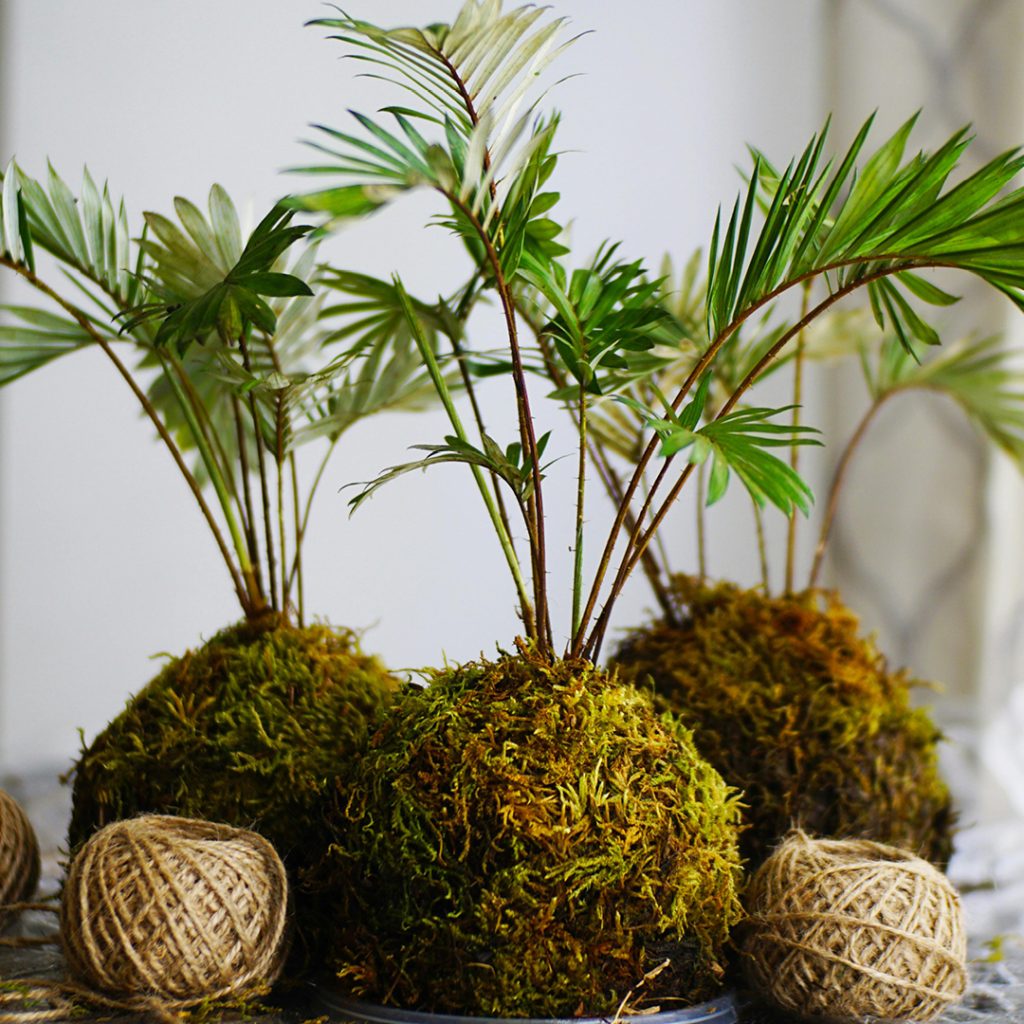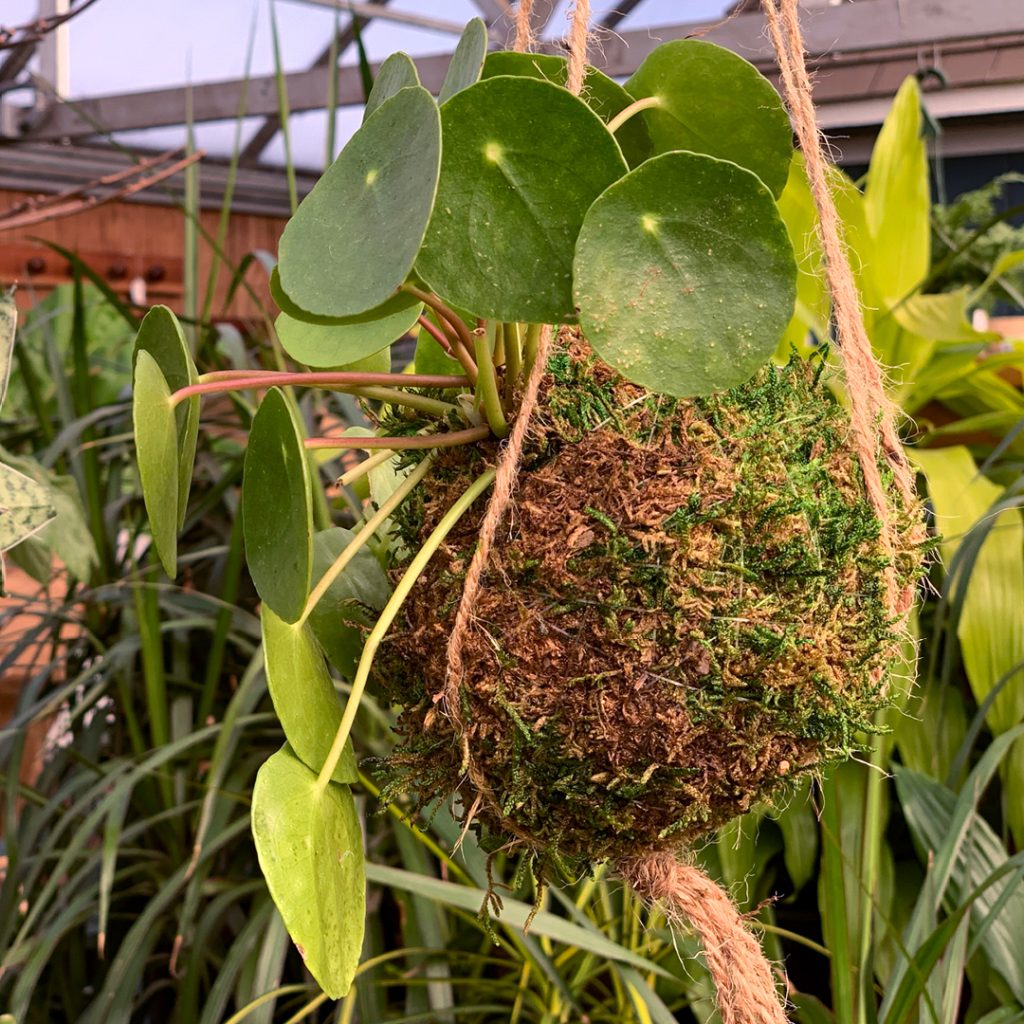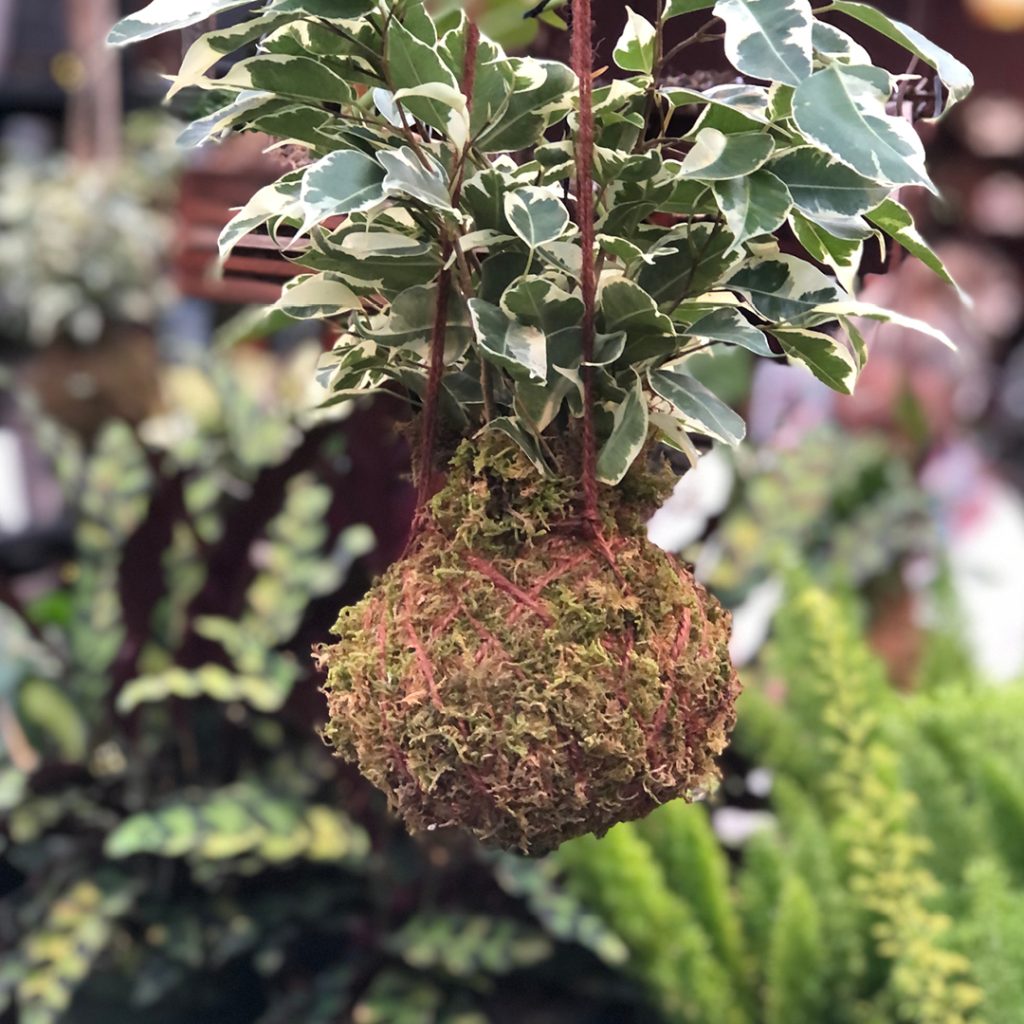Are you a gardener with a minimalist vibe? Well then, kokedama will give you all the right feels!
What is Kokedama?
Kokedama, loosely translated as “ball of moss,” has become a popular trend in recent years, and for good reason. This Japanese art form eliminates planting pot use by wrapping moss around the root ball to create a beautifully minimalist plant display. If you’re interested in adding some greenery to your home and are looking for a space-saving option, then kokedama is for you.
One reason for kokedama’s recent surge in popularity is its practicality. Unlike traditional potted plants, kokedama is versatile and can be either hung in the home or placed in a saucer or bowl atop a table, shelf, mantle, windowsill, or other surface. Hanging as a display option is perfect for those with limited space. Additionally, kokedama is an enjoyable, easy, and unique way to create a stunning display that can last for years with just a little bit of maintenance. Also, it is an excellent winter gardening project that is fun for the whole family.
Materials
Before you start your kokedama, you’ll want to gather your materials, and it’s important to choose the right ones.
- Plants
Most small houseplants will do. We recommend African violet, anthurium, begonia, cyclamen, dracaena, ferns, peperomia, philodendron, pilea, and pothos as great beginner plants. Ease of care is important when selecting your plant, but more importantly, consider where you have the room to display your kokedama. You will want your chosen plant to be displayed where its light, temperature, and humidity needs are met. - Moss
Select sheet moss, either fresh or dried. - Soil
Any good quality potting soil will do. Potting soil with a bit of compost for nutrition and vermiculite for aeration is an extra good choice. - String
It is best to avoid using jute or cotton string. These are attractive with a natural look but break down rather quickly compared to waxed string or fishing line. - Incidentals
Scissors are the only tool necessary to cut the moss and string.
How To Construct
Once you have your materials, it’s time to get kokedama construction.
- Premoisten the soil just enough so that it maintains its shape when it is formed into a ball.
- Gently remove the selected plant from its pot, shake off excess soil, and mold the moist potting soil ball around the plant roots.
- Lay an adequate-sized piece of sheet moss flat and place the soil ball in the middle.
- Shroud the soil ball in moss, trimming away any extra.
- While holding the moss in place, tie a string loop around the soil ball.
- Continue to wrap the string around the ball, tugging as you go to keep it taunt until the moss is secured to the ball. Tie off the line and cut away the excess.
- Add a tripod of long strings, as long as you like, and evenly spaced around the ball. Tie them to the line that is wrapped around the moss ball.
- Gather the three strings at the top and balance the kodedama so it hangs correctly. You may eliminate this and the following steps if you choose to display it in a saucer or bowl.
- Fold the three strings down about three inches and knot them to create a hanger.
- Hang your kodedama and enjoy!
After Care
Familiarizing yourself with your chosen kokedama plant will assist you greatly in caring for it correctly. Depending on the type of plant you choose, you’ll want to make sure that all its needs are met.
- Water
Water as needed. Check every few days or so by sticking a finger through the moss to assess dryness. Water using a bowl, soak the ball thoroughly, and squeeze out all the excess water before rehanging. - Light
Provide adequate light for your selected plant and position accordingly. - Humidity
Humidity is necessary for all plants, but some more than others. Be sure to have a spray bottle filled with fresh water nearby. Mist your kokedama frequently, especially in the winter when the air indoors is particularly dry. - Feed
Fertilize your kokedama during the growing season with a water-soluble houseplant fertilizer. Use at a quarter strength in the soaking water. Follow the manufacturer’s recommended instructions for frequency. - Groom
Groom your kokedama as necessary, snipping off any browning bit and keeping vining plants in bounds.
In conclusion, kokedama is an easy and trendy way to bring some greenery into your life. With a little time and a few basic supplies, you can create beautiful, pot-less, hanging plant displays that will impress your friends and family.
Note: Succulents may be used for kokedama, requiring more light than most plants but less water, humidity, and fertilizer.




 Click here to stay informed
Click here to stay informed
